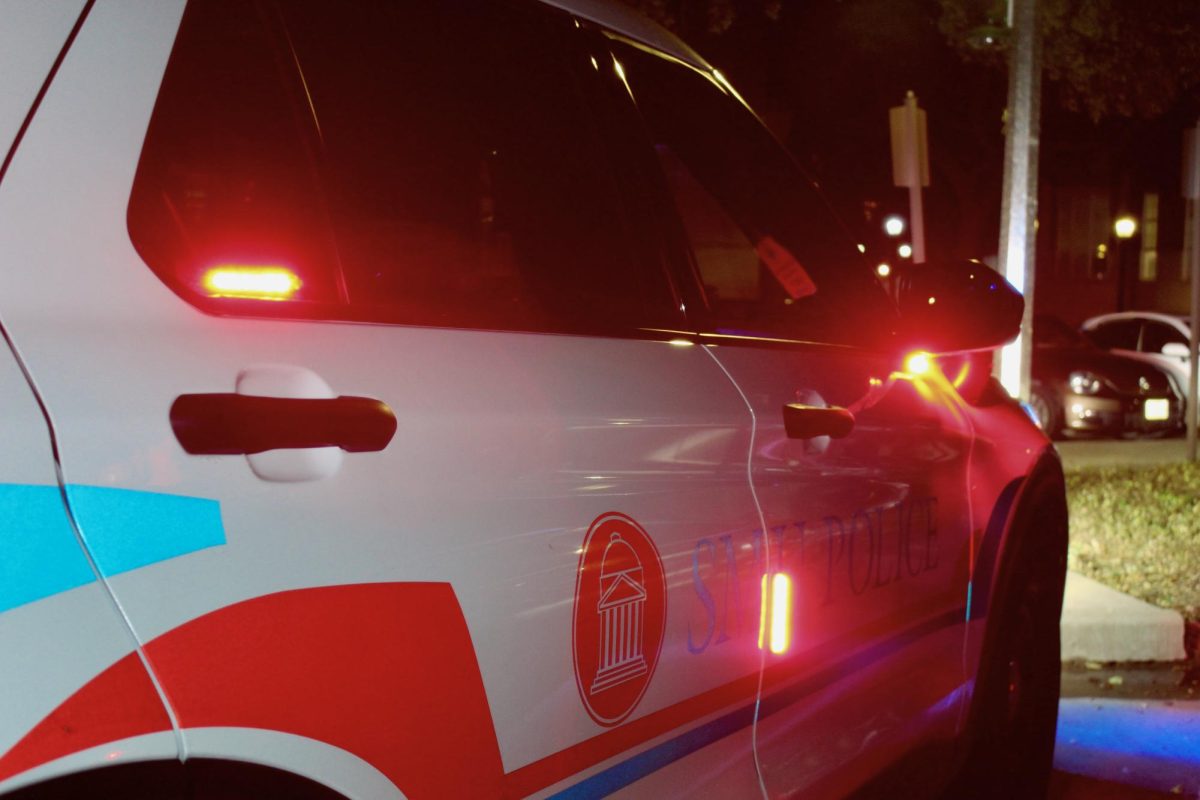The University Park Fire Department and the SMU Police Department launched an arson investigation Tuesday to locate those responsible for setting three separate fires in Shuttles Hall earlier that morning.
According to police reports released Wednesday, all three fires were extinguished by the time firefighters responded to the scene. However, investigators observed ashes in front of room 118 on the first floor and rooms 415 and 422 on the fourth floor of the residence hall.
“We are calling it arson,” said Capt. Mike Snellgrove of the SMU Police Department. “Someone intentionally started these fires.”
University Park Fire Marshal Carl Murphy declined to comment on the investigation so far, but did say that he would keep the SMU Police Department abreast of his findings.
“Some leads have already developed,” Snellgrove said. “When we catch the individuals who started these fires, they will be prosecuted in Dallas County Courts.”
As she was filing down the stairwell during Tuesday morning’s alarm, first-year Brittany Timmerman noticed a screen from the second-floor window had been removed. First-year Samara Mele observed footprints on the screen when she was walking down the stairs later in the day.
“I think [the people who started the fire] may have escaped that way,” Timmerman said. “All you have to do is push the screens.”
As the day progressed and students gathered to discuss the morning’s events, few believed that Shuttles residents started the fires.
“We’re like family in this dorm,” junior Shannon Schmidt said.”If anyone said anything about it, we would all know.”
Police estimate that the fires caused $500 in damage to the residence hall. As of Tuesday afternoon, there was no evidence of fire damage or vandalism to any of the fire sites.
Although some students had heard that several residents were fined after items in violation of the fire code were found in their rooms while firefighters secured the building, Schmidt was not aware of any specific students who had been fined.
However, 22 students who failed to evacuate the building while the alarms were going off were referred to the campus judicial officer for fire safety violations.
Several of the students who remained in their rooms, including Mele, the last resident evacuated from the building, claimed that the alarms failed to wake them.
“We don’t believe this is true as we know the fire alarms are very loud and audible in all the rooms,” Snellgrove said. “We believe these students simply disregarded evacuation procedures intentionally.”
As a result of the morning’s confusion, fire alarms rang in Shuttles again Tuesday afternoon, this time in a fire drill ordered by Murphy to practice proper evacuation procedure.
A January 2000 dorm fire at Seton Hall University in South Orange, N.J. proved fatal after students failed to evacuate. Because there had been several false alarms earlier in the week, many of the New Jersey students ignored the alarm. As a result, three died and over fifty were injured in the blaze.
“We can’t emphasize enough, when the fire alarm activates, get out!” Snellgrove said. “Many people have died in fires because they thought it was a false alarm.”











